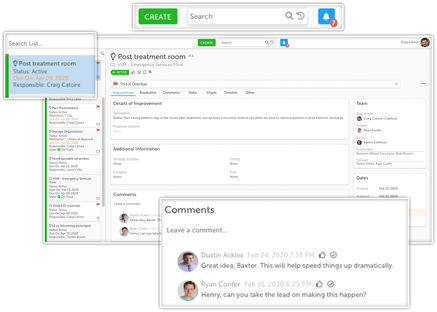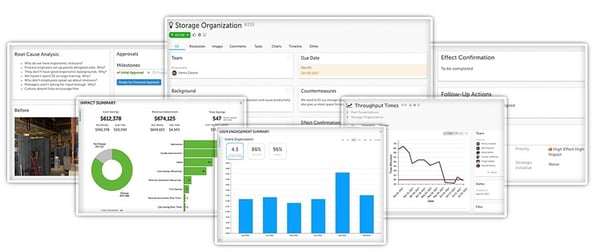 I'm sure you've all played the game 20 questions. The goal of the traditional parlor game is to uncover an object chosen by one player by asking questions that eliminate other possibilities until deductive reasoning reveals the answer. Careful selection of questions can significantly improve the odds of the questioner winning the game.
I'm sure you've all played the game 20 questions. The goal of the traditional parlor game is to uncover an object chosen by one player by asking questions that eliminate other possibilities until deductive reasoning reveals the answer. Careful selection of questions can significantly improve the odds of the questioner winning the game.
When it comes to improvement projects, it is also true that careful selection of questions can significantly improve the odds of "winning," also known as producing positive change. What follows are 20 questions, that if considered at the outset, can help set your improvement project up for success.
1. Is this improvement aligned with the strategic vision and breakthrough objectives?
Strategic alignment is the most effective way to prioritize improvement work. If a project doesn't advance a central objective, it should probably be set aside for one that is more on target.
2. Is there an opportunity for a short-term win?
A central principle of continuous improvement is that small gains, repeated consistently, are the way to achieve business success. Make sure the scope of each improvement is narrow enough to achieve positive change in short order.
3. Is there a defined business case?
Before work begins, make sure the scope, the resources required, and the desired end state are well understood and documented.
4. Is there executive support for the project?
Executives don't need to be involved in every improvement project, but they are essential when it comes to removing obstacles and providing resources.
5. How will the results be measured?
It is essential to be very specific about the intended benefits of each improvement and how it will be documented and tracked over time.
6. How will technology be used to support the project?
Whether you are using improvement management software or spreadsheets and email (not recommended), it should be clear to everyone how technology will be used to capture information, communicate with team members, and document each step of the process.
7. What obstacles can we foresee?
Are there difficult stakeholders? Is the current process poorly documented? Are external factors likely to be an issue? The more you know about what might block your progress, the better you can prepare ahead of time.
8. Have the needs of all stakeholders been considered?
It is common for process change to impact more people than just the process operators. Be sure to consider the up and downstream impacts of each project.
9. Are the right people involved?
Speaking of stakeholders, continuous improvement is a team sport. Ensure that each project includes the operators, subject matter experts, and internal customers necessary to get the desired results.
10. Are you addressing the root cause of a problem?
We highly recommend the 5 Why's technique for getting to the heart of a problem. This helps avoid Band-aid solutions that can cause more problems than they solve.
11. How will the improvement be sustained?
One effective way to ensure that improvements are sustained is to operate under Standard Work. Every task is performed to the new Standard until it is revised following another improvement cycle.
12. What is the schedule for measuring the impact of the improvement over time?
Another way to ensure improvement is sustained is to set a time-table for checking results to ensure that old problems don't creep back into the process.
13. Which continuous improvement tools will be used?
Not all improvement projects call for the same set of tools, so consider whether you will use an improvement cycle like PDSA or DMAIC and what other tools such as A3 documents and control charts will be useful.

14. Can we learn anything from past improvements?
In the ideal case, your organization has a database of past improvement projects. Is there one similar to the project at hand? What were the lessons learned from that previous experience?
15. What resources are needed?
Some projects require only a conference room and the participants' time, while others require special equipment and budget. A comprehensive list of anticipated resource requirements will help streamline the project.
16. How will employees be trained on the new process?
Ideally, at least some process operators will be involved in the improvement project. A plan for training others on the new Standard is needed.
17. How will we document and share what we learn during this project?
We mentioned learning from past projects, be sure to pass what you discover along to the next team by documenting the experience carefully in an accessible platform.
18. How will results be communicated to the executive team and the organization?
Be sure to get clear expectations from leaders about how the results of the project should be communicated.
19. What are the key dates and milestones?
A project calendar is a helpful tool for any project lasting more than a few days. It is also useful to have a calendar of all improvement projects to avoid any resource conflicts.
20. How will we recognize and celebrate success?
Recognition is something that too often gets neglected. Building it into the project plan ensures that those who contribute to success will know they are appreciated.
If you have solid answers to each of these questions at the outset, you can be confident that the work you do will provide value, strengthen the organization's body of knowledge, and generate lasting impact.




Add a Comment